Eyes on Ohio Waters: Water Quality Monitoring in the Huntington District
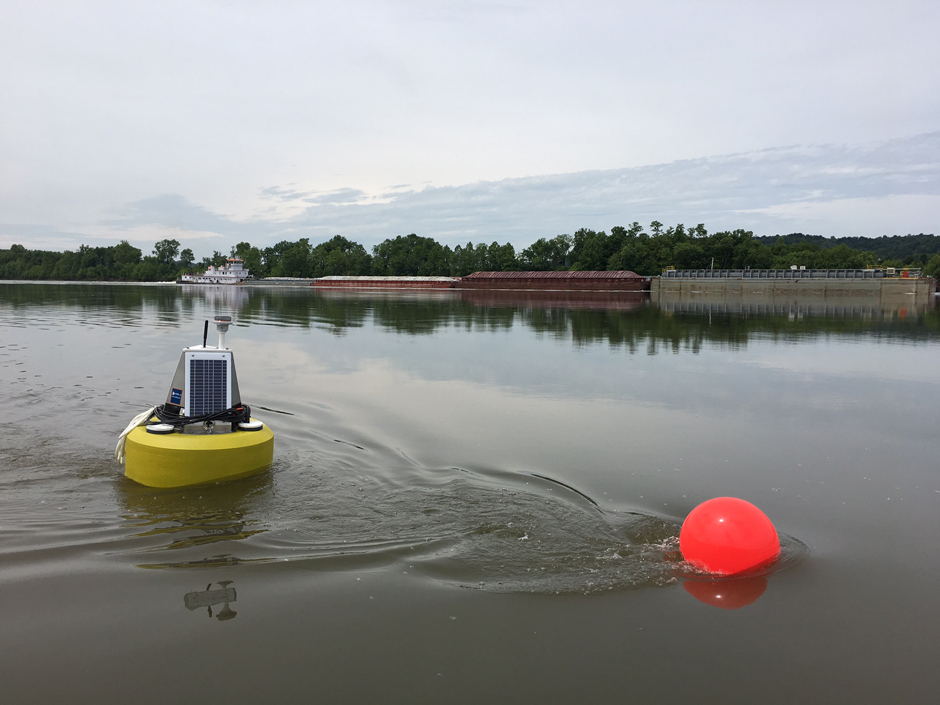 WIZARD Buoy located on the Ohio River below R.C. Byrd Locks and Dams. (Credit: LRH Water Quality Team / USACE)
WIZARD Buoy located on the Ohio River below R.C. Byrd Locks and Dams. (Credit: LRH Water Quality Team / USACE)The world of water quality monitoring is vast and diverse, with environmental professionals working in the field in a variety of environments and applications. From watershed monitoring to source water management, a career in water quality provides opportunities worldwide.
Thaddaeus Tuggle chose to pursue a career in water quality after attending Cedarville University and working closely with the environmental faculty, who instilled in him a passion for working in streams, improving water quality, and educating people about the overall importance of watershed stewardship.
After graduating, Tuggle worked for the Knox Soil & Water Conservation District in central Ohio before eventually returning to Marshall University in West Virginia. During his time there, Tuggle recalls working closely with several U.S. Army Corps of Engineers (USACE) employees who seemed to genuinely enjoy their work.
Seeing how much his colleagues enjoyed their work, Tuggle happily took a job as an aquatic biologist in the water quality team within the Huntington District (LRH) of the USACE in 2015 and has stayed there since.
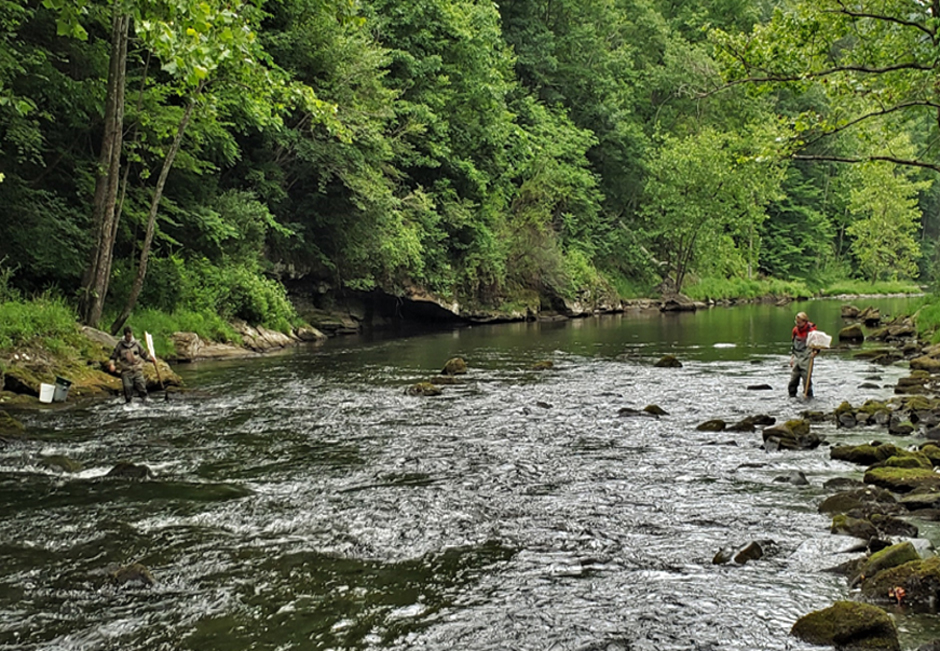
LRH Team members Thad Tuggle (L) and Nate Fleshman (R) collecting benthic macroinvertebrates along the Pound River below John W. Flannagan Reservoir, VA. (Credit: Josh Daugherty / USACE)
USACE Water Quality Initiatives
Tuggle’s current work focuses on water quality monitoring at USACE lakes in four different states: Kentucky, Ohio, Virginia and West Virginia. As a field biologist, his job includes working closely with monitoring instrumentation, outreach and coordination, data collection, and data analysis.
For the last nine years, Tuggle has been tasked with maintaining the monitoring equipment, a task that has allowed him to see all the changes technology has undergone over the years.
Tuggle also serves as the LRH District’s point of contact for Harmful Algal Blooms (HAB) within the region, coordinating with State agencies whenever there is a potential HAB on a monitored lake. Additionally, Tuggle collects water quality data and studies benthic macroinvertebrate and fish assemblage data, helping to analyze and summarize findings at the end of the year for the annual reports.
The LRH covers approximately 45,000 square miles of drainage area, with nine river basins flowing into a 311-mile stretch of the Ohio River. The LRH monitors 35 flood control projects in this area—31 lake projects and 4 dry dams.
Tuggle lists four main goals for these flood control projects:
- Assess compliance with state and federal water quality standards by monitoring current water quality conditions impacted by a project’s operation;
- Provide support to water control, project operations, and navigation for regulation and modifications;
- Monitor water quality conditions, establish baseline conditions, assess current water quality status, and identify any significant water quality trends;
- Evaluate the effectiveness of the Congressionally approved Water Control Plan.
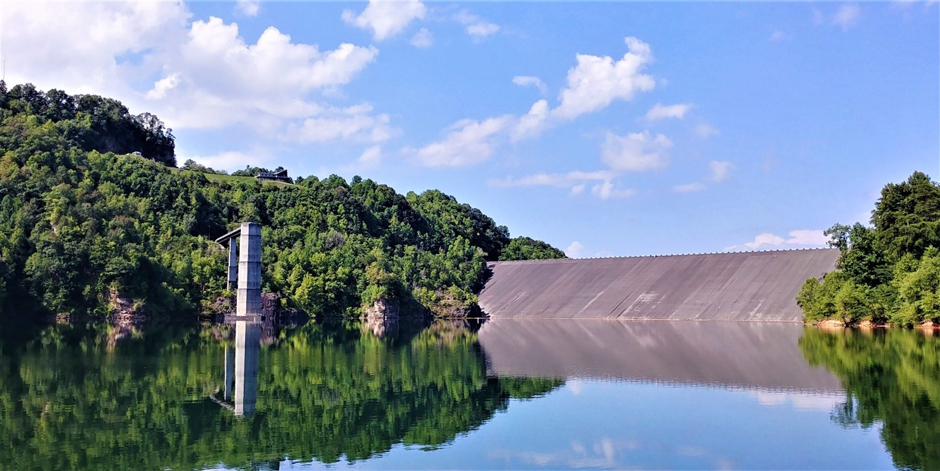
R.D. Bailey Lake located in Southern WV. (Credit: Josh Daugherty / USACE)
The LRH is also responsible for monitoring dredging activities in the Ohio River. The USACE is mandated to maintain the channel depth on the Ohio and Kanawha rivers, so the river beds are dredged to maintain the same depth.
Under the National Environmental Policy Act of 1970, the Corps started an environmental monitoring program to evaluate the impacts associated with channel maintenance. More specifically, sediment contaminants and plumes must be monitored prior to, during, and after dredging activities.
The main goal of these monitoring efforts is to protect any sensitive mussel species known to reside in the area.
Tuggle elaborates, “Due to the abundance of riverine habitat immediately downstream of many locks and dams, high quality mussel beds tend to aggregate in these locations. Many of these beds are known to contain endangered species or provide the density and diversity of mussel beds known to support endangered mussels.”

WIZARD deployed below RC Byrd Locks and Dam (Credit: LRH Water Quality Team / USACE)
Monitoring Ohio Waters
Because mussels can be sensitive to changes in water quality, a real-time monitoring system allows the USACE to track conditions in the waterway and protect any endangered or threatened mussels. Due to how sensitive mussels are to environmental changes and poor water quality conditions, USACE typically monitors DO, Temp, Specific Conductance, pH, Turbidity, and occasionally Chlorophyll and nitrate.
According to Tuggle, the main sampling initiatives are on a 5-year rotation, meaning that each lake is sampled every five years, and during that year, USACE will visit the same sites six times. Rivers are sampled at various points of the year to capture different seasonal differences.
The lake and dredge buoys are continuous, collecting data every 15 minutes. The NexSens buoys in the lake are equipped with X3 data loggers, while the dredge buoys house the older X2 logger. Integrated with the dredge buoys is a YSI EXO Sonde to collect ambient water quality data and a SeaTek 5 MHz Ultrasonic Ranging System, which captures images of the lake bed.
Tuggle explains, “It has 8 transducers that measure the river bed and if there is sediment being deposited on the substrate, we are able to detect that change in real time.”
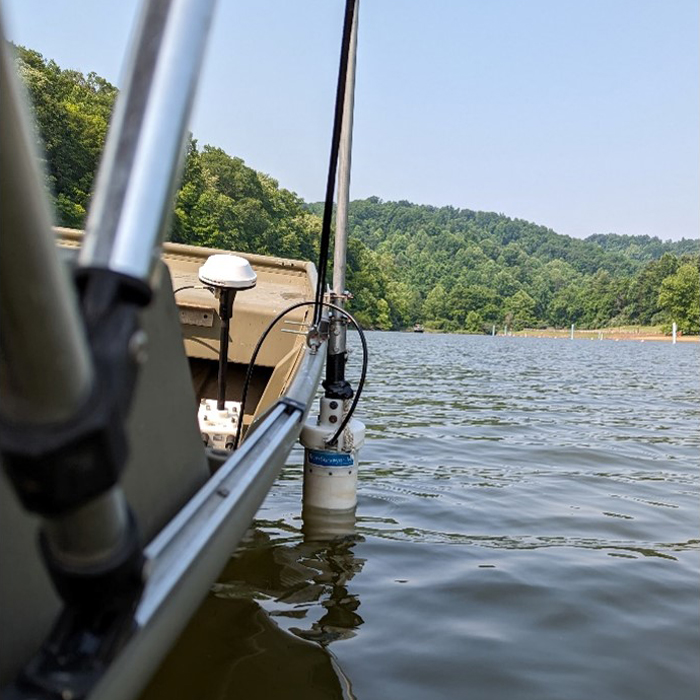
SonTek M9 Acoustic Doppler being used for bathymetry mapping at Beech Fork Lake, WV. (Credit: Nate Fleshman / USACE)
This integrated solution is referred to as the Water Intrinsic Zoological Ambient Research Device or, more simply, WIZARD. The buoy-based platform sits at the bottom of the Ohio River and monitors sediment deposition in real-time.
He continues, “This buoy is important, because below the R.C. Byrd Locks & Dams there are endangered mussel species that could potentially become entrapped in sediment and the young of year mussels wouldn’t be able to travel through the sediment, essentially knocking out a whole year class of endangered mussels. Having the real-time monitoring capabilities allows us to watch for this sediment deposition during Ohio River dredging activities.”
Alongside the buoys, an EcoMapper side scan sonar is used to monitor sediment deposition in the lakes. Additionally, the Sontek M9 and rQPOD are used to collect discharge data.
Tuggle elaborates, “We use the data to adjust our rating curves, which allows us to know the storage capacity of our lakes. The Sontek M9 and rQPOD Remote Surface Water Vehicle are used for the same applications, but the M9 is also used for flow measure measurements as well.”
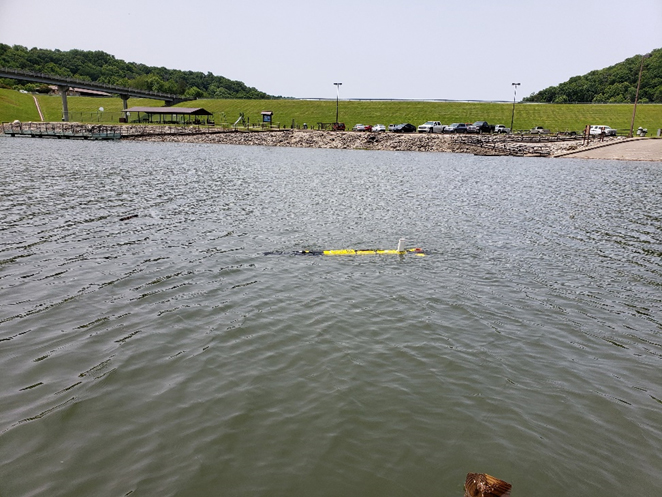
8 ECOMapper operating in Beech Fork Lake, WV. (Credit: Nate Fleshman / USACE)
Conclusion
The combination of equipment and monitoring techniques provides various types of long-term data, capturing lake and river information over the targeted time period. While the USACE’s work impacts waterways across the country, Tuggle believes the four main goals of the flood project capture how important their work is.
“I think the four main goals really encompass what makes our work important [. . .] and are why Congress continues to allocate money to Water Quality Programs within the Army Corps of Engineers,” states Tuggle.
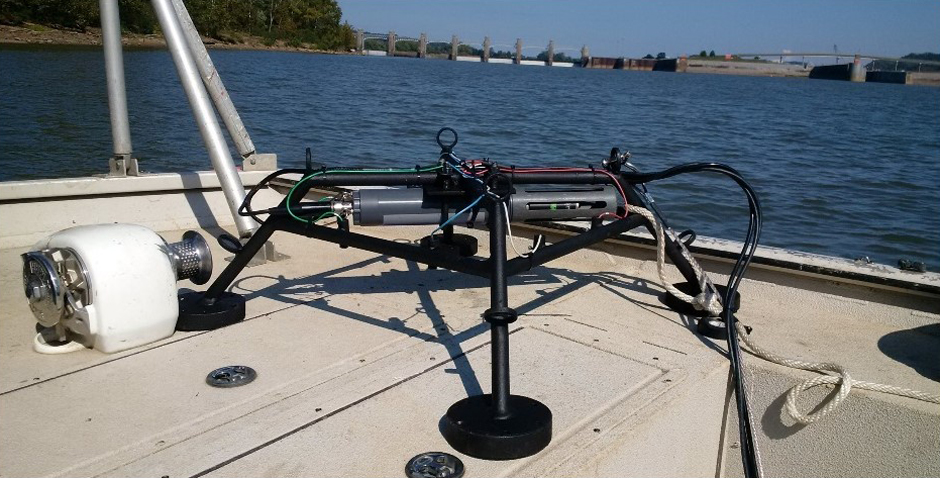
WIZARD platform being deployed below RC Byrd Locks and Dams. (Credit: LRH Water Quality Team / USACE)




0 comments